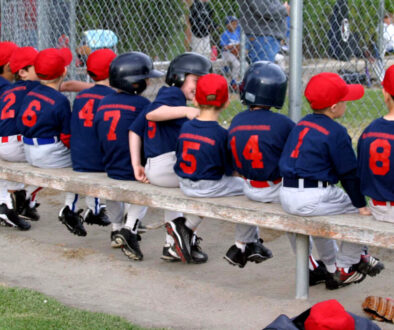Best Practices for Birthday Parties at Sports Facilities
When I opened DNA Sports Center, I never expected birthday parties to be a big source of revenue for us. I knew there were a lot of places in town that were already marketing hard for birthday party business. I wasn’t interested in competing in an area that we might not dominate.
Well, I was wrong: Birthday parties are now one of our most profitable and popular services. My eSoft Planner clients have had varying levels of success with birthday parties at their own sports facilities. So, I thought I’d put together a list of a few best practices.
1. Create great packages
When parents choose to pay for a birthday party outside of their home, they’re doing it because they want to avoid stress and save time. They don’t want to clean, cook, or worry about activity planning; ideally, they’d show up the day of the party, watch their kids have a great time, and leave with their kids tired and happy.
When you create your birthday party packages, put yourself in those parents’ shoes and include everything that YOU would want. (Planning your programming around your clients’ needs is a great idea for your business overall). At the very least, party packages should include:
- food, snacks and all utensils, including plates and napkins
- drinks, cups and ice
- decorations and party supplies
- a party coordinator who will help for the entire length of the party, including writing down gifts received
You can definitely get more creative with your party packages, depending on what your particular clients are looking for and what resources you have. For example, many people offer birthday cake (although many parents opt to bring this in themselves). You could also offer to send invitations, track RSVPs, or send reminders to invitees (especially if you have a robust front desk staff).
To get ideas that will give your birthday party packages an edge, call clients who have booked parties with you in the past to see if they have suggestions, and see what your competitors are offering.
Once you’ve developed your deluxe package, you may want to strip some of those features away to create a few more affordable packages for parents. (Just make sure that your expenses are also decreasing enough that you’re still hitting your revenue goals.)
2. Get the pricing right and require a deposit
When birthday parties aren’t profitable for your business, they can become a distraction from your primary income sources and your brand.
To make sure your parties are making money, I suggest using a similar process to setting camp/class pricing. Basically, add up ALL your party expenses (including the cost of the space and your staff time for setup and clean up), set your revenue goals, and then figure out how much you need to charge to reach those goals. Some businesses choose to charge per guest, but I’d suggest charging per range of guests. That way, you won’t get stuck with the details of exact headcounts (the exact amount of RSVPs rarely shows up) and the parents won’t be as stressed about it, either.
Here’s how my packages are structured at DNA Sports Center:
- 15 guests and under costs $154 (roughly $10/guest)
- 20 guests and under costs $184 (roughly $9/guest)
- 25 guests and under (roughly $8.50/guest). (Most people don’t want more than 25 guests, and these numbers are the best fit for the most popular games that we run for the kids).
I also require a flat rate deposit of $75 to reserve any birthday party (most of you already know that I always prefer upfront payment). The deposit is non-refundable. This holds the parents accountable and ensures that they consider all their options before they reserve a date.
3. Use a Checklist
Over the years, I developed a checklist to make sure that each staff member understands what to do in the days leading up to the party so that all the food, drinks and supplies are ready at the right times. Tasks include double checking with the client and putting large pizza orders in early.
The checklist also includes a list of cleanup tasks for after the party.
The staff initials and dates each task as it’s completed, and then after the party we file that form in our Birthday Parties file for reference.
4. Get Feedback
Sometime after each party, call the client to follow up. You can use an official survey and record the results, or you can just get general, conversational feedback. I admit that I haven’t done this step as often as I should, but when I do, it gives great insights. (Don’t have the same person who ran the party call the client, though. It’s important that they speak freely about how the party was handled.)
The next step is to continue to boost birthday party revenue through upsells, cutting expenses, and cross promotion. Click here to read it!



